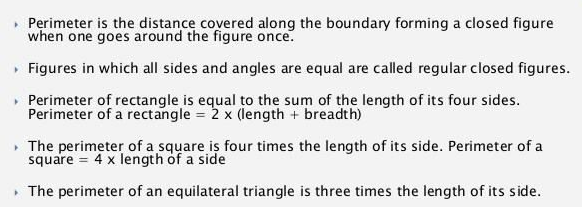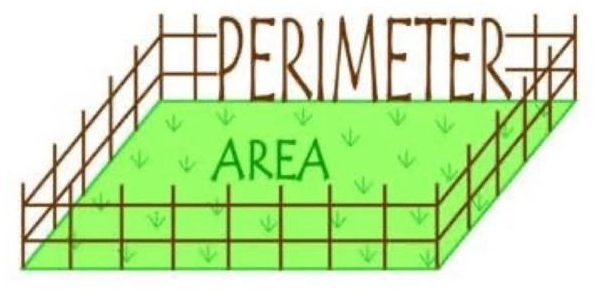CLASS-6
MENSURATION - PERIMETER
The perimeter of a geometric figure is the total length of its boundary or the sum of the lengths of all its sides. Perimeter is a fundamental concept in geometry and is used to measure the distance around two-dimensional shapes such as polygons, circles, and more. The formula for calculating the perimeter of various shapes depends on their specific characteristics. Here are some common shapes and their perimeter formulas:
- Rectangle:- Perimeter = 2 × (length + width).
- Square:- Perimeter = 4 × side.
- Triangle:- Perimeter = Sum of the lengths of its three sides:- a + b + c, where a, b, and c are the lengths of the triangle's sides.
- Circle:- Perimeter (also known as the circumference) = 2 π × radius or π × diameter.
- Regular Polygon:- For a regular polygon with n sides and side length s, the perimeter = n × s
- Parallelogram:- Perimeter = 2 × (length + width).
- Trapezoid:- Perimeter = Sum of the lengths of its four sides.
- Cuboid (3D Shape):- Perimeter = Sum of the lengths of all its edges.
- Irregular Shapes:- For irregular shapes, you can calculate the perimeter by breaking them down into smaller regular or known shapes and summing the perimeters of those components.


In practical terms, finding the perimeter of a shape is often used to determine how much material is needed to enclose or border a particular area, such as fencing around a garden or calculating the distance around a running track.
It's important to note that perimeter is a measure of length, and the unit of measurement (e.g., meters, feet, inches) should be consistent with the measurements of the sides of the shape being considered.